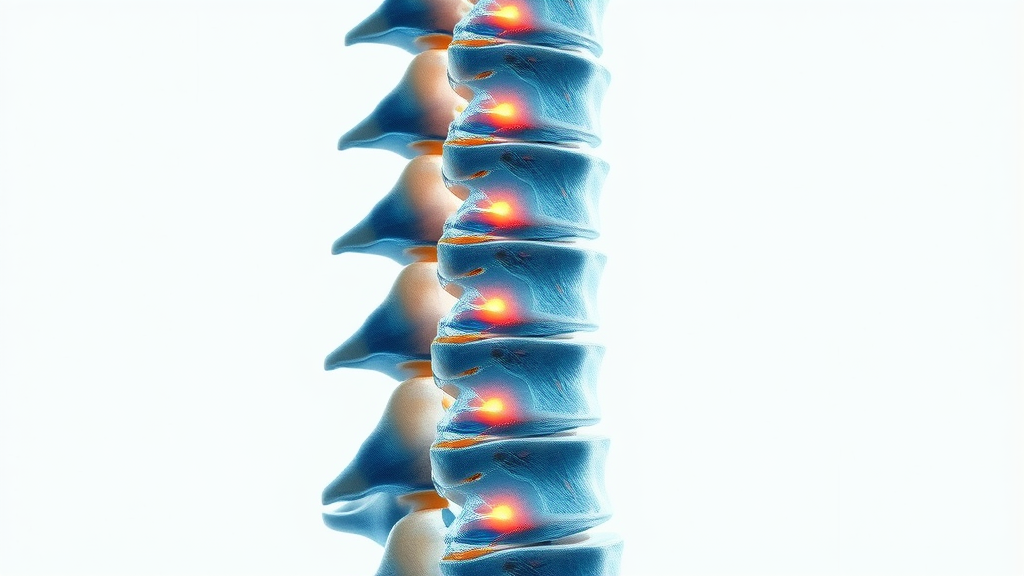Did you know? Over 70 million Americans experience back pain that interrupts daily life—yet, many find lasting relief through spinal adjustment techniques rooted in both science and tradition. If you’re searching for effective, non-pharmaceutical solutions for chronic discomfort, discover the truth behind professional spinal adjustment and how it may transform your mobility, comfort, and quality of life.
When To Call the Doctor
Experiencing persistent pain, tingling, numbness, or weakness after a spinal adjustment? While most people feel better after treatment, it’s vital to know when symptoms are a sign to contact your primary care provider or chiropractor. Significant increases in pain , loss of control over bladder or bowels, or severe headache warrant immediate evaluation to prevent serious complications. Your care provider is equipped to assess adverse reactions and coordinate care to ensure your safety and recovery.
Reaching out promptly helps determine whether you’re dealing with normal side effects from a chiropractic adjustment or something that needs further medical intervention. While minor soreness is expected, don’t hesitate to consult your primary care physician or chiropractor if you feel unsure about your symptom progression after an adjustment.
What are the side effects or complications of a chiropractic adjustment?
Common side effects of spinal adjustments include mild soreness, stiffness, or aching—especially in the neck or lower back —typically resolving within 24 to 48 hours. Serious complications are rare but may include herniated discs, nerve compression, or stroke-like symptoms in severe cases. Always discuss health history with your chiropractor to minimize risks and make informed decisions regarding your chiropractic care.
Is spinal manipulation safe?
Research consistently shows that for most people, spinal manipulation performed by a licensed chiropractor is safe and effective for conditions like low back pain or neck pain . Adverse events are rare—most patients tolerate chiropractic adjustments well, experiencing only minor and temporary discomfort. However, certain individuals (such as those with severe osteoporosis or bleeding disorders) should consult closely with their primary care physician or specialist before treatment. Proper evaluation and communication are key for safe, effective care.
What is that clicker that chiropractors use?
The "clicker" used by many chiropractors is an Activator Adjusting Instrument —a handheld device designed to deliver gentle, precise thrusts to the spine or joints. Unlike manual adjustments that use the hands, the Activator offers a controlled, low-force impulse to mobilize soft tissues and restore joint motion . This tool is especially popular for patients who may be sensitive to traditional manual methods or for those seeking a more targeted approach.
Clinical studies suggest that the Activator is effective for various conditions, including back pain and neck pain . It allows providers to pinpoint and perform spinal adjustments on specific vertebrae, reducing the likelihood of excessive force and making the experience more comfortable for patients. If you are hesitant about manual adjustments or have concerns about receiving chiropractic care, the Activator technique might be an option to discuss with your provider.

7 Common Chiropractic Adjustments & What They Do
Chiropractors use a variety of methods to perform spinal adjustments tailored to individual needs. Here are seven of the most common:
- Diversified Technique: The classic, hands-on spinal adjustment used to improve alignment and mobility.
- Activator Method: Employs the "clicker" instrument for gentle, precise adjustments.
- Gonstead Technique: Focuses on diagnosing and correcting specific spine misalignments via x-rays and manual adjustments.
- Thompson Drop-Table: Utilizes a specialized table to minimize manual force during adjustment.
- Flexion-Distraction: A gentle, non-thrusting method often used for disc injuries or sciatica.
- Sacro Occipital Technique: Uses pelvic blocks and gentle force for structural balance.
- Spinal Mobilization: Non-thrust, gentle rhythmic movement restoring motion and flexibility without sharp force.
Each technique is selected based on patient diagnosis, comfort, and health history, ensuring a personalized approach to care for conditions like lower back pain , stiff joints, and chronic headaches. Consult your care provider to see which technique best fits your needs.
For a deeper dive into how specific chiropractic techniques can be tailored to your unique health needs, you may find it helpful to explore this comprehensive overview of chiropractic techniques that transform your health . This resource breaks down the most effective methods and their benefits for a variety of conditions.
Risks / Benefits
Risks of chiropractic adjustments include rare but significant adverse events such as herniated discs or nerve injury. For most, the benefits —including improved range of motion , reduced pain, and enhanced quality of life—outweigh the potential risks. Always disclose your health history to your care provider to tailor your treatment safely and effectively.
Chiropractic Adjustment
Chiropractic adjustment refers to a specific, skilled movement applied to a joint, most often the spine, intended to restore normal function and mobility. This core technique of chiropractic care is used to address pain, stiffness, and dysfunction, helping to realign the spine and alleviate pressure on nerves and soft tissue structure.
Chiropractic adjustments benefit not only those dealing with back pain or neck pain but also individuals hoping to prevent issues related to poor posture , sedentary lifestyles, or athletic strain. The gentle thrusts and positioning applied during adjustments provide targeted relief, empowering the body’s natural healing processes.
What is a Spinal Adjustment?
A spinal adjustment is a hands-on or instrument-assisted procedure where a chiropractor applies a controlled, sudden force to a spinal joint. The purpose is to improve spinal motion and increase the body’s physical function. This distinguishes it from broad spinal manipulation techniques, which may also be used by physical therapists and osteopaths for musculoskeletal pain relief.

The True Impact of Spinal Adjustment: Surprising Health Benefits Revealed
- Foundations of spinal adjustment and the latest clinical insights
- How spinal manipulation and chiropractic adjustment techniques deliver measurable relief
- Identifying when you need spinal adjustments and choosing the right care provider
- Truths about side effects, safety, and debunking common myths
- Pro tips for maximizing the benefits and prolonging results
Scientific evidence has uncovered surprising benefits of routine spinal adjustments —effects reach beyond mere pain relief . Regular chiropractic care can improve range of motion , support healthy posture, decrease muscle tension, and help manage conditions like migraines, sciatica, and even stress-related symptoms. People with chronic lower back pain or neck pain often experience restored functionality and improved mobility, reducing dependence on medications and fostering long-term wellness. Consulting a skilled provider ensures personalized care and better outcomes.
It's not just about relieving acute symptoms—consistent chiropractic adjustments have been linked to a stronger immune response, more restful sleep, and even enhanced athletic performance by optimizing spinal alignment and nerve function. As more individuals seek noninvasive solutions for recurring musculoskeletal issues, the evidence for the wide-reaching benefits of spinal adjustment continues to grow.
Understanding Spinal Adjustment: The Cornerstone of Chiropractic Care
Spinal adjustments form the foundation of contemporary chiropractic care. The concept is simple—restore healthy movement and alignment in the spine or joints using a precise, controlled force. The results are immediate and long-lasting, offering an alternative for patients who may not tolerate or wish to avoid pharmaceuticals for their pain.
By targeting the source of dysfunction, chiropractors help reduce pain , enhance joint motion , and restore overall body balance. This makes chiropractic adjustments one of the most researched forms of complementary treatment for lower back pain and related musculoskeletal conditions. Whether caused by athletic injuries, nerve issues, or everyday stressors, expert spinal adjustment can provide both symptom relief and functional improvements.
What is a Spinal Adjustment? Distinguishing It from Spinal Manipulation
Though often used interchangeably, spinal adjustment specifically refers to the manual therapy techniques performed by chiropractors to realign vertebrae, optimize nerve flow, and restore function. Meanwhile, spinal manipulation is a broader term, including similar manual therapies that can be executed by various health professionals like physical therapists and doctors of osteopathy.
The primary goal, regardless of provider, is to apply the appropriate amount of force to a joint that is restricted or misaligned. However, chiropractors often develop unique assessment and correction protocols, making spinal adjustment a hallmark of their practice. Knowing the distinctions helps patients make informed choices about the specific therapies best suited for their health goals.

Key Differences: Spinal Adjustment vs. Spinal Manipulation and Chiropractic Adjustment
Understanding the subtle distinctions between spinal adjustment , spinal manipulation , and chiropractic adjustment empowers patients to communicate effectively with their care providers . Chiropractic adjustments emphasize precise correction of joint misalignments, focusing on restoring the spine’s innate ability to move and heal. In contrast, spinal manipulation may involve less specific, generalized movement of the spine or other joints—sometimes used by physical therapists or other health professionals for musculoskeletal issues or pain relief.
Chiropractic adjustments are typically associated with audible joint “popping” or “cracking,” while spinal mobilization uses softer, rhythmic movements to restore flexibility without thrust. Your chiropractor will select the right method based on your health status, goals, and clinical assessment, ensuring both safety and effectiveness.
The Science: How Spinal Adjustments Impact Nerve Function and Musculoskeletal Health
Spinal adjustments have a direct influence on the nervous system by relieving pressure on nerves that emerge from between the vertebrae. Improving spinal alignment not only reduces pain but can also restore normal transmission of nerve signals, supporting balance, mobility, and even organ function. Numerous clinical trials have demonstrated positive effects of spinal adjustment on chronic back pain , neck pain , and other musculoskeletal complaints.
Research also suggests that spinal adjustments can reduce inflammation in nearby soft tissue , increase blood flow, and promote endorphin release—nature’s own painkillers. For individuals struggling with poor posture or repetitive stress injuries, regular chiropractic treatment can mitigate the risk of recurrent pain or dysfunction, supporting a healthier, more active lifestyle.
| Technique | Performed By | Main Purpose | Force Level | Typical Sensation | Common Use |
|---|---|---|---|---|---|
| Spinal Adjustment | Chiropractors | Realign specific joints, restore nerve flow | Controlled, high-velocity thrust | Popping or “crack” sensation | Back/neck pain, headaches, mobility issues |
| Spinal Manipulation | Chiropractors, PTs, DOs | Relieve joint restrictions, reduce pain | Moderate to forceful, variable | Possible pop, less specific | Musculoskeletal pain, limited motion |
| Spinal Mobilization | Chiropractors, PTs | Gently increase range of motion | Low force, slow movement | No popping, more stretching | Fragile, elderly, post-injury, gentle care |
Essential Techniques: Spinal Adjustment, Table Technique, and Spinal Mobilization
Spinal adjustments can be performed using diverse methods tailored to your condition and comfort level. Besides manual thrust techniques, many chiropractors employ advanced strategies such as table technique and spinal mobilization to deliver effective, comfortable care.
The table technique utilizes a specialized adjustment table that drops or moves with your body, requiring less manual force and making the process smoother—especially useful for patients with severe pain, osteoporosis, or high sensitivity. In comparison, spinal mobilization provides gentle, non-thrusting movements to increase flexibility and relieve tension. These modalities ensure everyone can benefit from chiropractic care , regardless of age or health status.
Popular Methods: Activator, Diversified, Gonstead, and Table Technique
The world of chiropractic adjustment is full of specialized methods. The Diversified technique is a hands-on, high-velocity thrust to specific spinal joints—great for quick restoration of function and mobility. The Activator Method involves a handheld tool popular for its precision and minimal discomfort, making it ideal for children, seniors, or those anxious about traditional manual adjustments.
The Gonstead technique relies on precise diagnostic tools such as thermography and x-ray to direct adjustments as specifically as possible. Meanwhile, table techniques (such as Thompson Drop-Table) provide a gentle, staged approach ideal for sensitive patients. Each technique is chosen after a thorough health assessment for safe, effective results.

When to Use Spinal Mobilization vs. Chiropractic Adjustments
Spinal mobilization is best for those requiring gentle care—elderly patients, those recovering from acute injuries, or individuals with conditions like osteoporosis or severe arthritis. Its slow, rhythmic movement minimizes the risk of irritation or adverse events while improving range of motion and circulation.
Chiropractic adjustments—delivering quick, focused thrusts—are often preferred by younger, healthier adults or athletes who want rapid improvements in alignment, pain relief, and function. Your care provider will determine which technique, or combination, meets your needs based on a full health history and physical exam.
The Role of the Care Provider: Finding the Right Professional for Your Spinal Adjustment
Choosing a qualified care provider is crucial to safe and effective spinal adjustment. While chiropractors are the leading professionals trained in spinal adjustments, some physical therapists and doctors of osteopathy are also skilled in spinal manipulation and mobilization techniques. Look for board certification, valid licensure, and ongoing professional education as key indicators of expertise.
Personal recommendations, online reviews, and professional affiliations with organizations like the American Chiropractic Association can help you feel confident in your choice of provider. Ultimately, you want someone who listens, educates, and builds a treatment plan around your individual needs—your comfort and safety always come first.
How to Select a Qualified Chiropractor or Care Provider
When selecting your provider, ask about their credentials, experience with similar conditions, and treatment philosophy. The best care providers prioritize patient education, shared decision-making, and ongoing communication. Don’t hesitate to inquire about different adjustment techniques, side effects, and aftercare to ensure you feel empowered and informed throughout the process.

What to Expect from Your First Chiropractic Adjustment Appointment
Your initial chiropractic appointment will typically involve a thorough health history and musculoskeletal exam. The provider will assess your spinal alignment , test mobility, review posture, and inquire about prior episodes of back pain , recent injuries, or underlying health conditions. X-rays or other imaging may be recommended in some cases for safety and precision.
Once your exam is complete, the chiropractor will discuss findings and propose a tailored treatment plan. The first spinal adjustment is usually gentle, and you’ll be positioned safely on an adjustment table or special device. Most patients notice an immediate sense of relief or increased mobility, though some report mild soreness afterward. Your provider will offer aftercare tips to ease any side effects and maximize lasting results.
Expert chiropractor’s opinion: “Every patient is unique, so individualized care is the cornerstone of effective spinal adjustment. Our goal is always precision, safety, and empowerment for each person who walks through our door.”
Spinal Adjustment Side Effects, Safety, and Myths Debunked
Understanding the safety profile and side effects of spinal adjustment helps set realistic expectations for your care. It’s natural to have concerns about what to expect, but the latest research confirms that chiropractic adjustments—performed by trained professionals—are generally safe for the vast majority of patients.
Minor side effects like soreness, headache, or tiredness occur in some patients, usually resolving within a couple of days. Serious complications are extremely rare but are best avoided by disclosing your full medical history and working with an experienced provider. Modern chiropractors embrace evidence-based care, adjusting techniques based on risk factors and patient preferences.

Common Side Effects of Spinal Adjustments
The most frequently reported side effects after spinal adjustment are mild and self-limited: temporary soreness, stiffness, or a feeling of “tiredness.” These sensations are similar to what you might feel after a deep tissue massage or new exercise routine. Most patients find these minor issues disappear within 24–48 hours and do not interfere with daily life.
Rarely, individuals may experience more pronounced symptoms—persistent headache, radiating pain, or nerve symptoms like tingling or numbness. If these occur, call your care provider for advice. Adverse events are most often linked to underlying conditions or improper technique, highlighting the importance of provider expertise and open communication about your health status.
How Safe is Spinal Manipulation? Separating Fact from Fiction
Extensive clinical research demonstrates that spinal manipulation is safe when performed by properly trained professionals. Risks are reduced further when practitioners perform thorough assessments and select the right patients for specific techniques. Most adverse events reported in literature are mild and transient. Catastrophic complications such as vertebral artery injury or cauda equina syndrome are exceedingly rare, often linked to pre-existing risk factors rather than the techniques themselves.
Patients can minimize risk by choosing experienced, credentialed providers and following all recommended aftercare. Maintaining a dialogue about any new or concerning symptoms after your adjustment further ensures the safest possible outcomes.
Latest Research: Effectiveness and Complication Rates of Chiropractic Adjustments
Recent meta-analyses and large clinical studies reveal that chiropractic adjustments are highly effective for the treatment of low back pain , neck pain , and tension-type headaches. Complication rates remain extremely low, particularly when procedures are performed by credentialed providers adhering to best-practice clinical guidelines. The overwhelming evidence supports the safety and efficacy of chiropractic care as a first-line treatment option for musculoskeletal complaints.
- Chiropractic care is as effective as or better than conventional pain management options for many patients with acute or chronic back pain .
- Adverse events are typically mild (soreness, headache) and rare in nature.
- Thorough assessment and patient selection are crucial to success and safety.
- Debunked Myths About Spinal Adjustment and Chiropractic Adjustments:
- Myth: Spinal adjustments are dangerous and always cause pain. Fact: Properly performed adjustments are safe and usually painless, with the majority of patients reporting relief.
- Myth: Once you start chiropractic care, you’re “locked in for life.” Fact: Most patients achieve results in just a few sessions and can choose maintenance care or periodic check-ins as needed.
- Myth: Spinal adjustments can “wear out” your joints. Fact: Current research shows that adjustments improve mobility and joint health without causing long-term harm.
Maximizing the Benefits of Spinal Adjustments: Prolonging Results and Reducing Pain
Getting the most from your spinal adjustment requires more than just periodic visits to your provider—it’s about proactive self-care and lifestyle management. Adhering to aftercare instructions, maintaining healthy movement habits, and prioritizing posture can help prolong relief and prevent the recurrence of pain or dysfunction.
Your chiropractor may offer exercises to strengthen supporting muscles, ergonomic advice for your home and office setup, and guidance on staying active safely. These small changes deliver cumulative benefits, protecting your investment in musculoskeletal health and ensuring that adjustments remain effective far into the future.
Aftercare Tips: What to Do After Your Spinal Adjustment
Post-adjustment, it’s important to stay hydrated, engage in light physical activity (like walking), and avoid heavy lifting or intense exercise for the first 24 hours. Applying a cold compress to areas of soreness can help minimize inflammation or discomfort. If your chiropractor recommends stretches or at-home exercises, follow their instructions carefully to support spinal mobility and healing.
Listen to your body: rest if you feel tired, and monitor how you feel in the hours and days after your session. This proactive approach helps maximize the effectiveness of your spinal adjustment and ensures your musculoskeletal system operates at its best.

Postural and Lifestyle Tweaks to Support Spinal Health
Consistency is key—simple changes in posture and daily routines can help protect the effects of your spinal adjustments long-term. Prioritize ergonomic furniture in your workspace, keep your computer screen at eye level, and avoid sitting for extended periods without breaks. Practice good lifting techniques, bend at the knees (not the waist), and stretch your back, neck, and shoulders regularly.
Incorporate low-impact exercise like swimming, yoga, or brisk walking. These activities build core strength and enhance flexibility, decreasing the risk of recurrent or chronic pain. By integrating these habits into your routine, you create a resilient foundation for both spinal and overall health, empowering you to live with less pain and greater mobility.
People Also Ask: Your Top Spinal Adjustment Questions Answered
What does spinal adjustment do?
Answer: Spinal adjustment realigns the vertebrae, restores joint mobility, and reduces nerve interference, thereby improving pain, mobility, and systemic function.
How do I know if I need a spinal adjustment?
Answer: Key signs include chronic back or neck pain, restricted movement, frequent headaches, or onset of nerve symptoms. Professional assessment is crucial.
What are the symptoms after getting back adjusted?
Answer: Mild soreness or aching is common post spinal adjustment, typically resolving within 24–48 hours. Significant pain or neurological changes should be reported to your care provider.
Does a spinal adjustment hurt?
Answer: Most patients report minimal discomfort. The procedure itself is often painless and many feel immediate relief or light pressure.
Frequently Asked Questions About Spinal Adjustments
-
How often should I get a spinal adjustment?
Frequency depends on your health goals and provider recommendations—some need weekly care, others benefit from monthly maintenance or as-needed sessions. -
Is spinal manipulation recommended for all ages?
Spinal manipulation can be adapted for infants, children, adults, and seniors; technique and force are tailored based on age and health status. -
What conditions respond best to chiropractic adjustment?
The most research-backed uses include low back pain , neck pain , tension headaches, sciatica, and limited mobility due to poor posture or injuries. -
Can spinal adjustments replace medication for pain?
Many patients experience significant pain relief and improved function, potentially reducing or eliminating the need for certain medications—always consult with your provider before changing treatments.
Mastering Spinal Adjustment for Lasting Relief: Essential Takeaways
- Spinal adjustment is central to musculoskeletal health and chronic pain management
- Choosing a skilled care provider ensures both safety and results
- Understanding the difference between spinal manipulation and mobilization empowers patients
- Consistent aftercare and posture awareness enhance long-term benefits
Unlock Lasting Relief with Professional Spinal Adjustments: Take Your First Step Today
Take the first step toward pain-free living by scheduling a consultation with a qualified chiropractor . Your journey to comfort, mobility, and lasting relief begins with informed care and proactive self-management—so why wait? Experience the transformative potential of spinal adjustment for yourself!
If you’re interested in expanding your understanding of holistic wellness and how chiropractic care fits into a broader healthy lifestyle, explore the latest insights and expert perspectives in the Featured News section at Healthy Living News . Discover new strategies, emerging research, and practical tips to elevate your approach to long-term health and well-being.
Spinal adjustments offer a range of benefits that extend beyond mere pain relief. For instance, the article “Stress Relief Benefits From Spinal Adjustments” highlights how these adjustments can significantly reduce stress levels by improving nervous system function, leading to enhanced relaxation and mental well-being. ( wavechiropracticfl.com ) Additionally, “3 Benefits of a Spinal Adjustment” discusses how spinal adjustments can improve range of motion and mobility by correcting misalignments that restrict joint movement, thereby enhancing flexibility and overall physical function. ( woodsindychiro.com ) If you’re serious about achieving lasting relief and overall wellness, these resources provide valuable insights into the multifaceted benefits of spinal adjustments.
 Add Row
Add Row 

 Add
Add 


Write A Comment